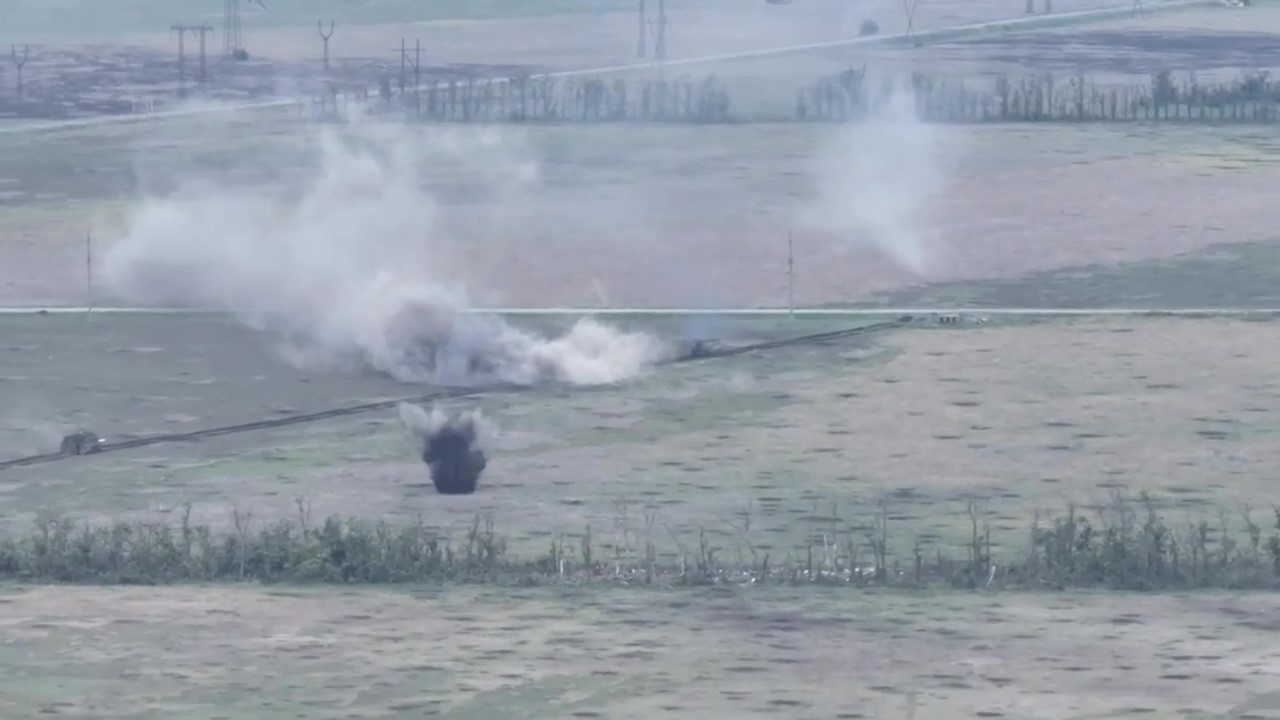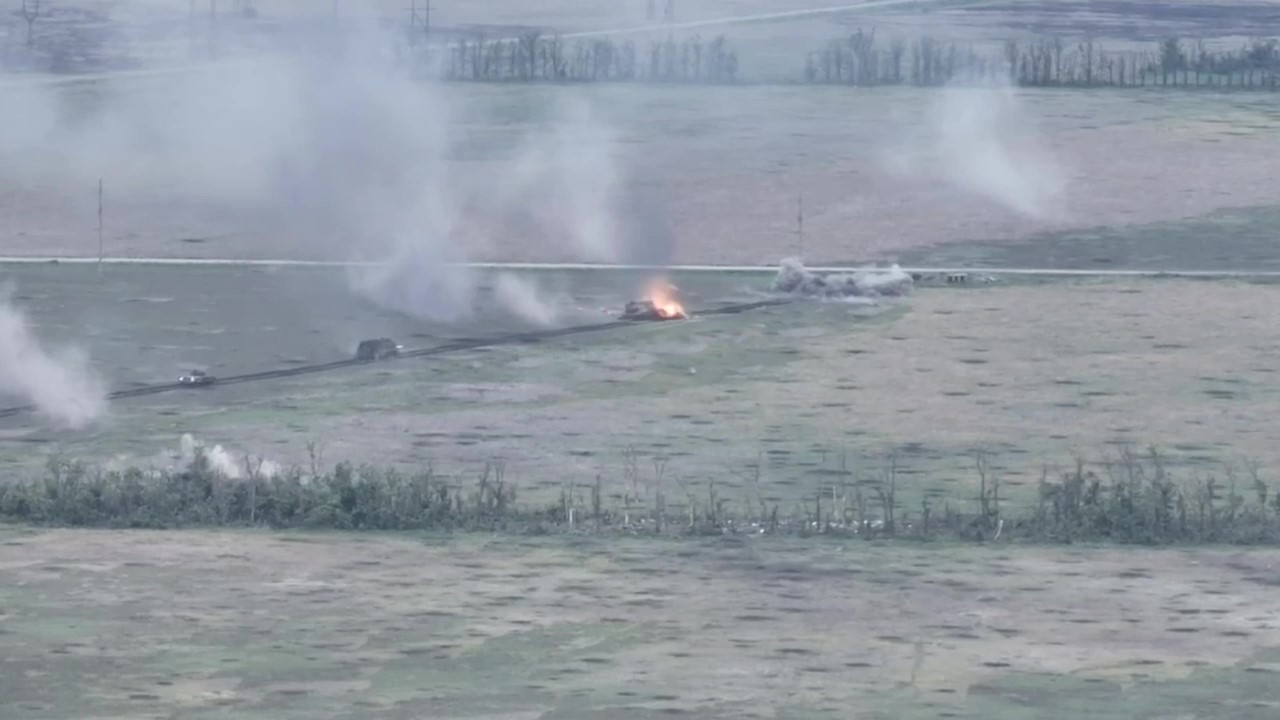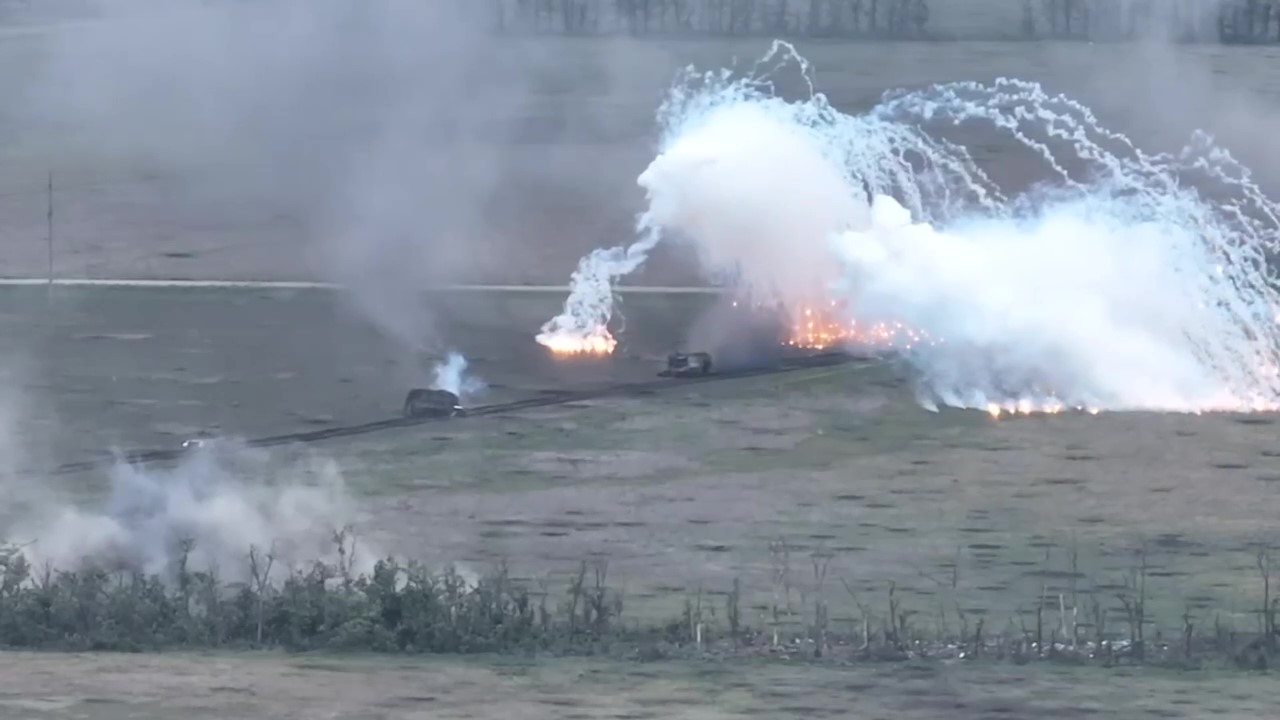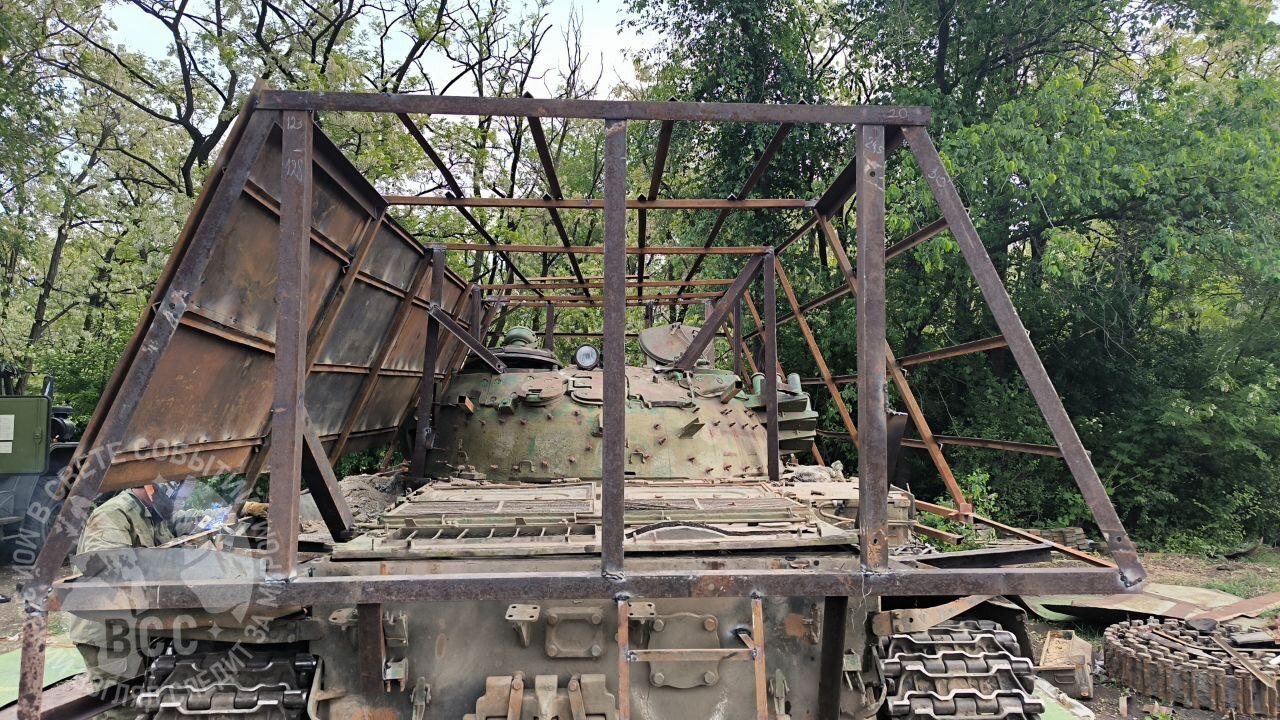Mass Attack of russian Tank-Sheds Gone Wrong
The russian invasion forces continue to scale up their practice of adding extra armor to their main battle tanks, applied according to a special pattern colloquially described as “tank shed” or “turtle tanks.” Moreover, if earlier the use of such vehicles was sporadic, this time, multiple tank sheds at once were sent to attack in one direction.
A video taken by russians themselves and shared by btvt.info, shows an assault of three extra-armored tanks and one ordinary. The location is unknown, but generally, such tank-sheds are most often noticed near the town of Krasnohorivka, eastern Ukraine. That is also where the first sample of this custom modernization was spotted.

While the tanks are trying to advance, anti-tank weapons, FPV drones, and artillery are firing at them. As a result, the first vehicle in the column fails to reach the firing spot and turns around, receives another hit to the aft side.

The next tank in line fires off smoke screens and turns around, too, providing cover for a retreat.

However, around this point, something didn’t work out as planned. The part where this second tank is getting hit and rendered immobile was cut out of the video, we can only see the outcome. Closer to the end of the footage is when the Ukrainian forces also manage to land a hit on an ordinary tank with a slat armor cage on top, the crew escapes the vehicle and runs away.

In summary of the battle, the first tank-shed, damaged at the very beginning, manages to fall back. The second is damaged, and the fate of the third one remains uncertain. The ordinary tank was abandoned. Therefore, the confirmed russian losses amounted to two tanks neutralized.
Note, that such superstructures applied to MBTs are far from being a real working know-how in the world of armored vehicles because instead of reliable components the russians use sheets of metal found wherever available, sometimes sheets of corrugated metal or household fences, welded to a metal frame.

But despite its jerry-rigged nature, this kind of protection provides a certain extent of protection against FPV drones. Particularly, the warhead deployed by these small uncrewed aerial vehicles is a common RPG-7 shaped-charge munition, its effectiveness relies on landing hits precisely on a tank’s weak spots. The “shed” blocks access to these vulnerabilities altogether.
Also, such factors as the premature detonation of the warhead and the spaced armor undermine the effectiveness of a strike. Furthermore, as it turns out from this video, apparently this protection design is effective against shaped-charge submunitions of cluster artillery rounds as well.

